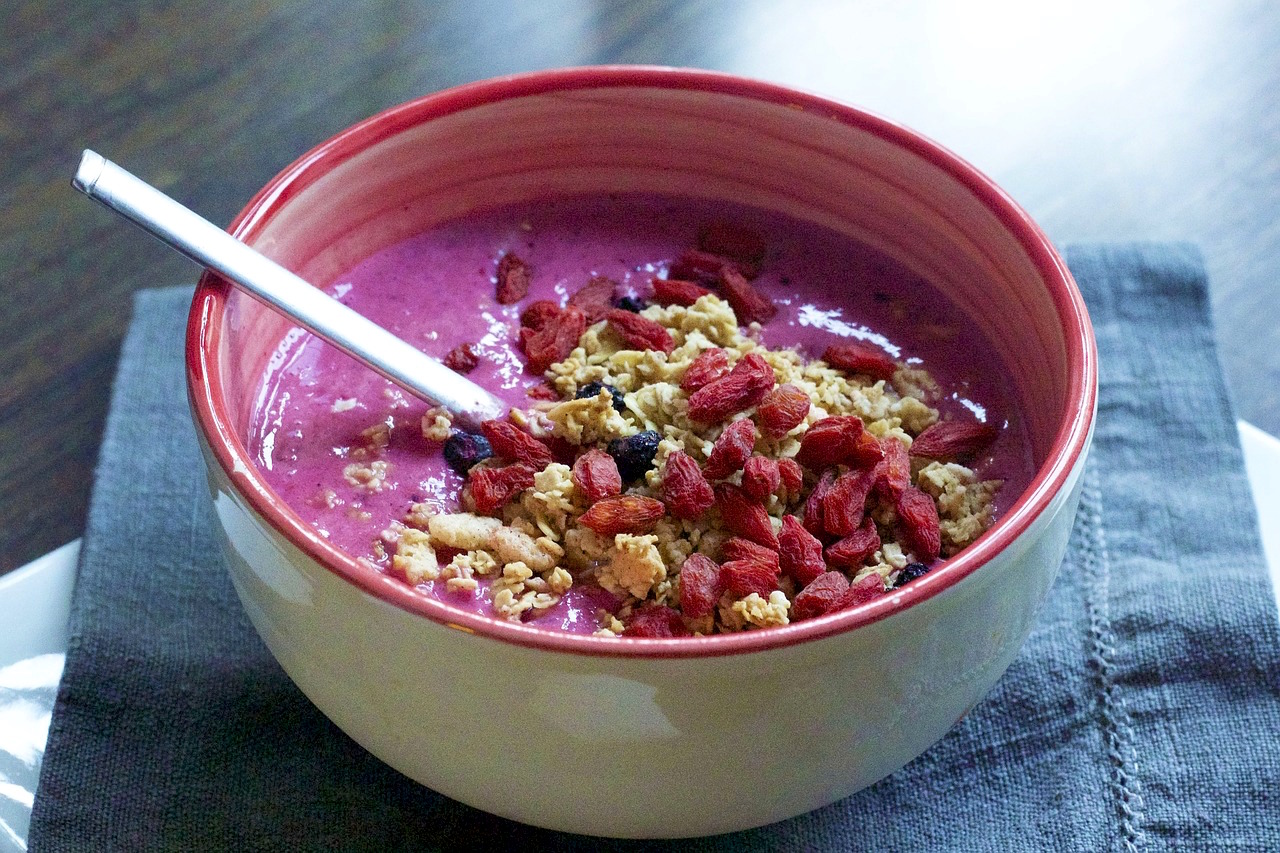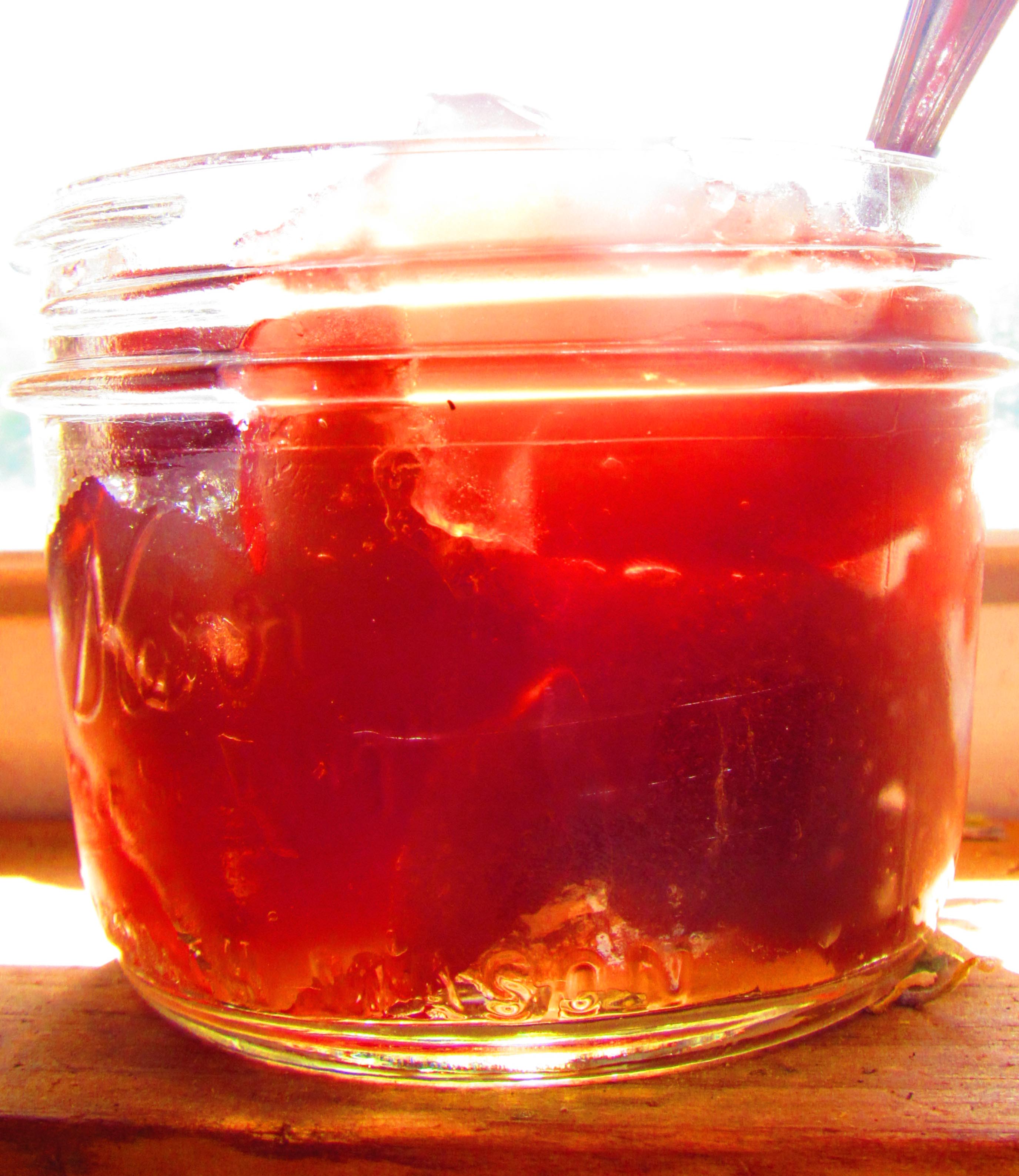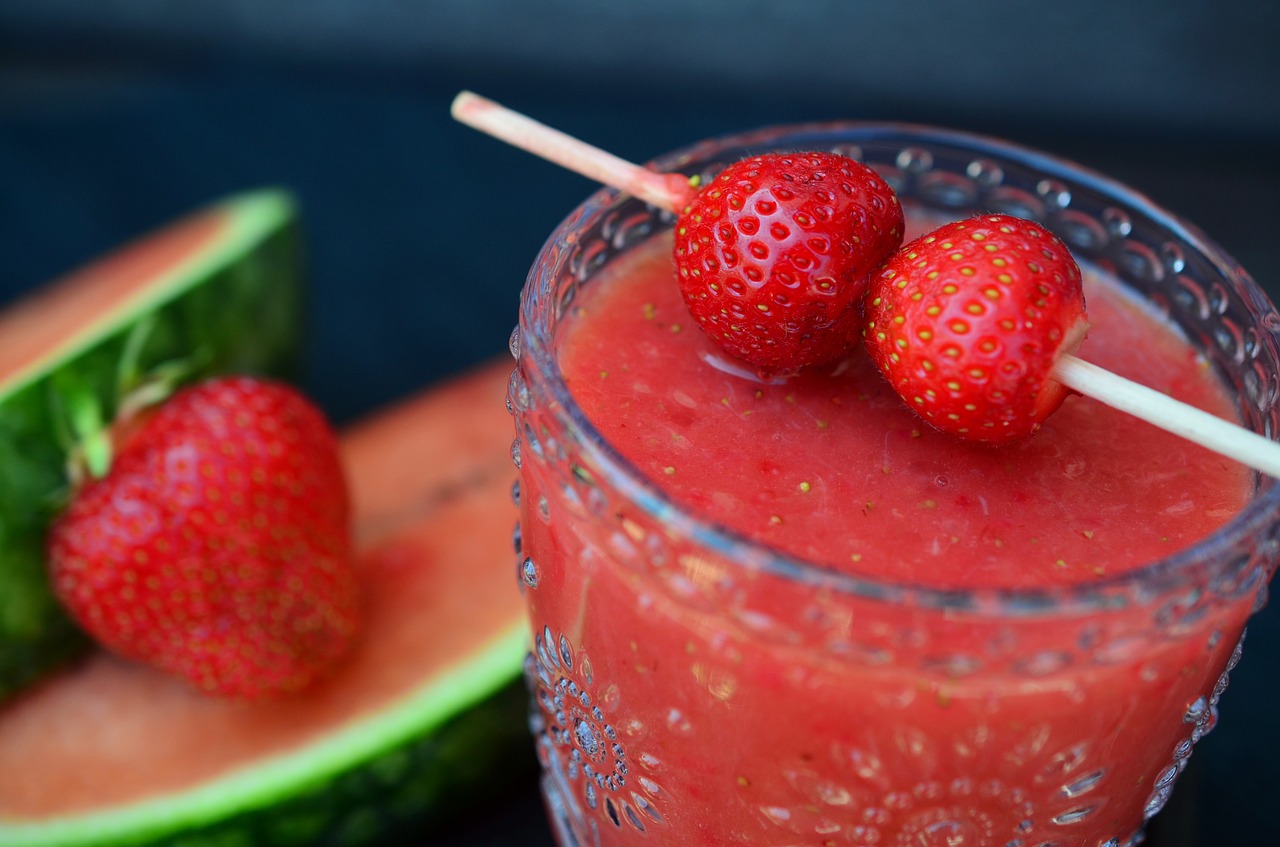
Guts to Marrow, Gelatin is Easy to Swallow
The latest food fads are all about the grizzly bits of the animal, so it’s maybe a relief to a lot of folks that some of the most nutritious grizzle of all — gelatin! — can come in pretty colors topped by pastured whipped cream. Gelatin, perhaps you’ve heard, is making a comeback, and nobody’s talking about the sugary weirdly-colored boxed powders or the stuff they serve in plastic cups in the school cafeteria (and even hospitals!). Nope. Grass-fed organic gelatin is what all the cool kids are eating.
As a clinical herbalist and food educator, I often find myself peering squinty-eyed at the RDAs and the science of “nutritionism” as the standards around which we should structure our daily interaction with pumpkins seeds and ribeyes and oatmeal and lettuce. Eating is not just about growth factors or preventing disease or increasing longevity. What we take into our bodies is a pathway toward conscious and celebratory connection with the rest of the living universe (I hope you are saying “duh” here). I love how nutrition researcher Ray Peat writes about Pavlov, who studied human nutrition because it “constituted the animal’s closest interactions with its environment” and was “motivated by a desire to understand life in its totality, including consciousness.”

I happen to feel that gelatin and all of its attendant characteristics offer a particular opportunity to move our food minds away from nutritionism and toward connected food practices. Not only does gelatin nourish our deepest physical structures, but it also allows us to engage in ethical and simple consumption. Many find it an easy-to-swallow argument that eating gelatin is a culinary tactic that helps us tread lightly on this planet; as John Thorne observes in Outlaw Cook, “The essential premise of stock is a good one: letting nothing go to waste” (Fallon & Enig, 2001).
For those folks who remain squeamishly on the fence or skeptical vegetarian-flexible, please note that this “superfood” (yes, I said it) doesn’t include ethically-questionable global import, difficult preparation, food waste, or more cost than the change in the bottom of your bag. Eating gelatin-rich foods is not only a hip environmental practice – read on to learn how gelatin helps ameliorate digestive disorders, heal broken bones, protect skin, and even support a good night’s sleep.
Jiggly Nutrition Facts
Traditional diets — including foraging, herding, and small-scale agricultural diets — have always included nose-to-tail gastronomic practices, which means consuming parts of the animal that are high in gelatin: skin, tendons, and gelatinous cuts of meat. Yummm. In a tract titled Gelatin in Nutrition and Medicine, N.R. Gotthoffer noted that as early as the 1750s in western Europe, physicians were already forgetting the use of “this ancient remedy” as essential in treating gastrointestinal dysfuntion and wasting diseases (Fallon & Enig, 2001).
Gelatin is an insoluble fibrous protein with no flavor or color and which contains 18 amino acids, 9 of which are essential amino acids (Peat, 2009). When making bone broth or powdered gelatin, an extractive process of selective hydrolysis is used. If you buy powdered gelatin, you can dissolve it in hot water; when it cools it forms a gel, neither solid nor liquid. Hydrolyzed collagen is also nutritionally useful, can be dissolved in cold or hot fluids, smoothies, sauces, or yogurt, and does not form a gel.

It is not only the nutritional components of gelatin that have earned its healing reputation. The substance is so easily recognized and absorbed by the body that it is an ergonomic way for delivering other compounds to their destinations. Researchers at the University of Illinois have discovered that nanoparticles of gelatin can carry medications to the brain in the event of stroke, and that they even help prolong the period of the medication’s effectiveness (Ahlberg, 2014). Because injured parts of the brain produce enzymes that can digest gelatin particles, the nanoparticles are able to target and thus bring medication to the damaged regions.
I suppose I could be wowed by the technological advances in this research, but really I’m just so darn impressed with the intelligence of our bodies. Making use of the “waste” parts of the cow to heal brain damage? Brilliant.
According to nutrition researcher Ray Peat, “Gelatin (the cooked form of collagen) makes up about 50% of the protein in an animal. . . 35% of the amino acids in gelatin are glycine, 11% alanine, and 21% proline and hydroxyproline.” Amino acids, such as the glycine abundant in gelatin, can behave as transmitters in the nervous system, causing excitation or inhibition, which means making things happen or not happen. Glycine in particular is broadly cell-protective for its physical properties.
Many centuries of wise parents and well-trained healers have proscribed bone broth and animal cartilage to support the treatments of diabetes, inflammatory bowel conditions, arthritis, fragile bones, and infectious disease. In the 12th century, the famous Jewish scholar and physician Maimonides recommended chicken broth for asthmas and colds — current research confirms gelatin-rich broths as preventative of and supportive for fighting infection — while Chinese doctors have for four thousands years recommended stock brewed from fish heads for virility, energy, and mental fitness (Fallon & Enig, 2001).
6 Reasons to Use Gelatin
Want more? Here are six of the several dozen reasons why gelatin should make its way regularly onto your family’s dessert plates.
Appropriate Use of Protein
If we want to eat meat as a “whole food,” I suggest eating the gelatin along with the muscle meat. Muscle meat is high in methionine, which is linked to increased homocysteine levels, which in turn appear to be a factor for heart disease, stroke, and mental health conditions (Peat, 2009). Homocysteine is neutralized by several B vitamins and — you guessed it — choline and glycine. Additionally, gelatin is high in protein (about 6 grams per tablespoon) as well as “protein-sparing,” which means that when consumed with other proteins, it makes the protein go farther in the body’s structural and biochemical functions (Fallon & Enig, 2001). This is one of the reasons that gelatin is historically and globally a staple in the diets of many cultures around the world. Shall I go into all the things protein does in a growing body?
Gut Healing
While I’d love to go into depth on the gut-brain axis research that supports the ideas behind the GAPS diet, let us suffice with the following. Certain foods — those with excess sugar, processing and preservative, transfats and hydrogenated oils, among others — can upset the microflora in the digestive tract, allowing degradation of the gut lining (“leaky gut”), which allows undigested food particles and related toxins into the blood stream, causing malabsorption, inflammation, and autoimmunity. This process can drastically effect mental health for people of all ages and has been linked to anxiety, depression, attention and focus deficits, aggression, and other mental conditions that can really make elementary school a drag.
Dr. Francis Pottenger wrote extensively on the merits of gelatin in broth and was known for heady statements such as, “Hydrophilic colloids form the substratum of all living protoplasm” (Fallon & Enig, 156). In his practice, Dr. Pottenger emphasized the hydrophilic (“water-loving”) nature of gelatin colloids (fluids with small molecules or ions suspended in them), which draw digestive juices to the gut and increase the speed and efficacy of digestion (Fallon & Enig, 116).

Bone broth, which is loaded with gelatin, is a major component of the GAPS diet; The superhero that is gelatin can stimulate sufficient gastric acid secretion, soothe and grow mucosal lining, and aid in water absorption and therefore good transit time.
Healthy Skin
Have you got a teenager with acne or middle-schooler who refuses to wear a hat in the sun? Both the glycine and proline found in gelatin help to form collagen, which is an essential structural component of the skin, aiding in resilience to sun damage. Keratin, also found in gelatin, is a profoundly strong protein found in hair, nails, teeth, and skin. Researchers have found that gelatin can stimulate the body to produce more collagen, which is essential for elasticity (Daniel). Bend, not break, right?
Joint and Bone protection
While some kids have to deal with genetic inflammatory joint and bone diseases, most are more likely to require nutrition for the repairs needed for when they decide they can levitate from the top bunk bed. Or maybe your kid is the fastest on the soccer field, and the other kids do whatever they can to take her down? Just saying, the school day can have some hard knocks. Research on hydrolyzed collagen supplement shows it to help repair in cases of cartilage damage and degeneration, while the glycine has show anti-inflammatory properties (ACL tear, anyone?).
Other research suggests that gelatin can help the body to increase production of collagen by chondrocytes, which are the cells maintaining connective tissue in the joints, notoriously slow to heal on account of the poor circulation in the connective tissue (Daniel).
Sleep Support
Maybe you’ve got an over-achieving third-grader who keeps you up on Sunday evenings due to stress-induced insomnia? That was me. Wish my folks had fed me some grass-fed gelatin. The glycine in gelatin has been shown to increase quality and duration of sleep, with study participants reporting feeling more well-rested, less drowsy during the day, and increased cognitive function throughout the day (Peat). Seems like it could be extra-helpful if someone has a major spelling test the next day.
Liver Support and Detoxification
Researchers are finding that glycine can help the liver not only function optimally in a healthy individual but that it can also help the liver return to normal working order in cases of dysfunction. As Sarah at the Healthy Home Economist notes, not enough glycine will limit the liver’s ability to do its jobs. Gelatin is an old-school and time-tested therapeutic option: in 1935, Dr. Reuben Ottenberg recommended in the Journal of the American Medical Association that individuals experiencing liver malfunction take 5-10 grams of gelatin daily as food or supplement (Daniel).

Get in my belly!
There are so many lovely ways to eat your gelatin: broths and stews, desserts like pudding, homemade marshmallows or gummy bears, smoothies and supplements, and of course, jello-like snacks. Great Lakes Gelatin Company is my favorite grass-fed source of gelatin, besides bones right from the animal into the stock pot.
If you’d like to go the supplement route, make sure you get the right form. Hydrolyzed collagen is easier to absorb because the processing has broken the proteins into individual amino acids. This kind of gelatin can be mixed as a real food protein powder into foods and beverages hot or cold, and it won’t form a gel. This type of supplement is especially useful for joint health, sleep, and skin.
Gelatin in its whole protein form is the optimal form for improving gut health. This is the structure that best carries fluid to the digestive tract and coats the mucosal linings with a sooth and protective layer. This type of gelatin powder requires warm liquid to dissolve, and its what you’d use to make gelatin and gummi snacks.
My favorite gelatin recipe? Refreshing in summer, warming and hydrating in the winter, allow me to introduce:
Lemon Blueberry Ginger Gelatin
Ingredients
1¾ cups lemon juice and/or blueberry juice (or Knudsen’s Lemon Ginger Echinacea juice), divided
¼ cup boiled water or boiled blueberries fresh or frozen
1 tablespoon grass-fed gelatin
1 tablespoon of chopped candied ginger
Directions
- Bloom the gelatin in a cool or room-temperature fruit juice by sprinkling the tablespoon of gelatin over ¼ cup of the fruit juice, and whisk until mixture thickens.
- Pour the ¼ cup of hot (just boiled) liquid over it and stir well to dissolve. Add remaining 1½ cups of fruit juice, the candied ginger, and any other fruit you’d like to include. Combine well.
- Pour the mixture into a glass loaf pan (or cupcake pan!), greased or lined with parchment paper. Refrigerate for at least 2 hours. Ready to eat when firm to the touch.
Words of Caution
Is it possible to eat too much gelatin? I’m a fan of consuming gelatin in food form (bone broth, gelatin dessert, gummi bears, as opposed to capsules or powdered supplementation) since some folks, such as Dr. Judy Tsafrir, report minor adverse effects such as fatigue and headaches from too-high doses of powdered supplement. It’s also important to use gelatin powder for making a gelatin product (that is, “blooming” the gelatin powder and dissolving it in hot water), while collagen hydrolysate can be dissolved in cool or hot fluids or smoothies. Catherine at Butter Nutrition (http://butternutrition.com/what-you-dont-know-about-gelatin-may-hurt-you-5-things-you-need-to-know/) warns that too much gelatin, or the wrong kind of supplement, could cause bloating and other digestive upsets. More sensitive digestive tracts might fare better with gelatin, while stronger digestive tracts could benefit from the collagen hydrolysate.
Looking for More Resources?
Check out the Healthy Home Economist: http://www.thehealthyhomeeconomist.com/resources/#supplements
for high quality and sustainably sourced real-food supplements for you and your family. I also love Grass-fed Girl’s Paleo Chocolate Gelatin Dessert (not to mention lots of her other recipes: http://www.grassfedgirl.com/healthy-paleo-chocolate-gelatin-dessert-recipe-gluten-dairy-free/
Naomi Ullian is an herbalist, writer, and performance artist living in southern Vermont. She loves bone broth bases and big mountains. Find more of her work at tinyponyapothecary.com and proseforpeople.com.
REFERENCES
Ahlberg, Liz. (2014). Getting into your head: Gelatin nanoparticles could deliver drugs to the brain. News Bureau: Illinois. Retrieved from http://news.illinois.edu/news/14/1223gelatin_hyungsoochoi_kyekyoonkim.html
Daniel, Kaayla. (2003). Why Broth is Beautiful: Essential Roles for Proline, Glycine and Gelatin. Weston Price Foundation. Retrieved from http://www.westonaprice.org/health-topics/why-broth-is-beautiful-essential-roles-for-proline-glycine-and-gelatin/
Fallon, Sally, and Dr. Mary G. Enig, PhD. (2001). Nourishing Traditions. Washington DC: NewTrends Publishing, Inc.
Gotthoffer, N.R. (1945). Gelatin in nutrition and medicine. Grayslake, IL: Grayslake Gelatin Company.
Joachim E., Kim I., Jin Y., Kim K., Lee J., Choi H. (2014). Gelatin nanoparticles enhance the neuroprotective effects of intranasally administered osteopontin in rat ischemic stroke model. Drug Delivery and Translational Research. 4(5-6):395-399.
Peat, Ray. (2009). “Gelatin, Stress, and Longevity.” Retrieved from http://raypeat.com/articles/articles/gelatin.shtml








